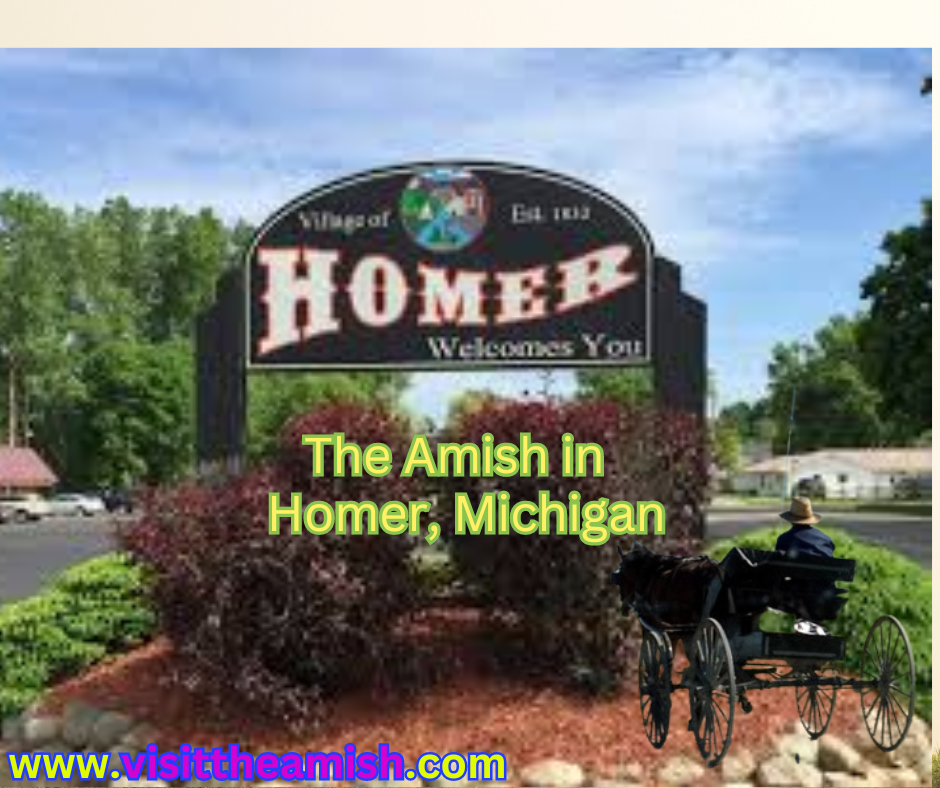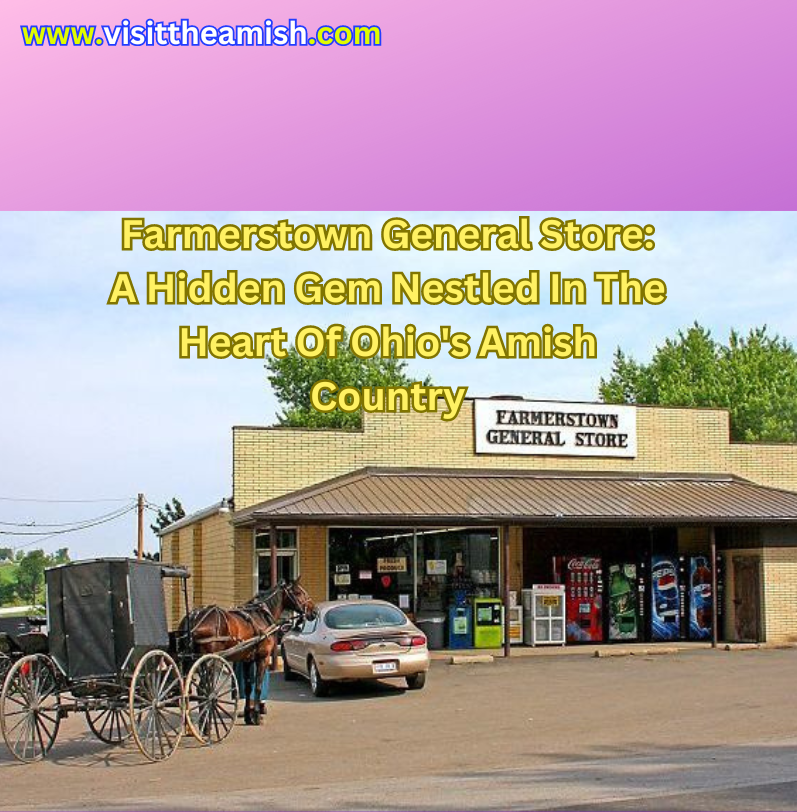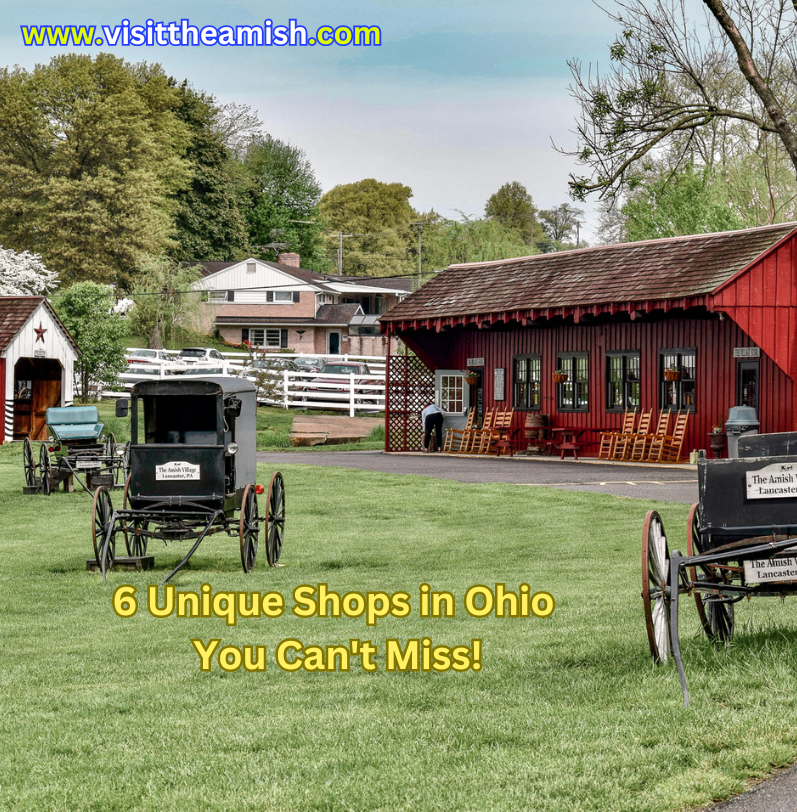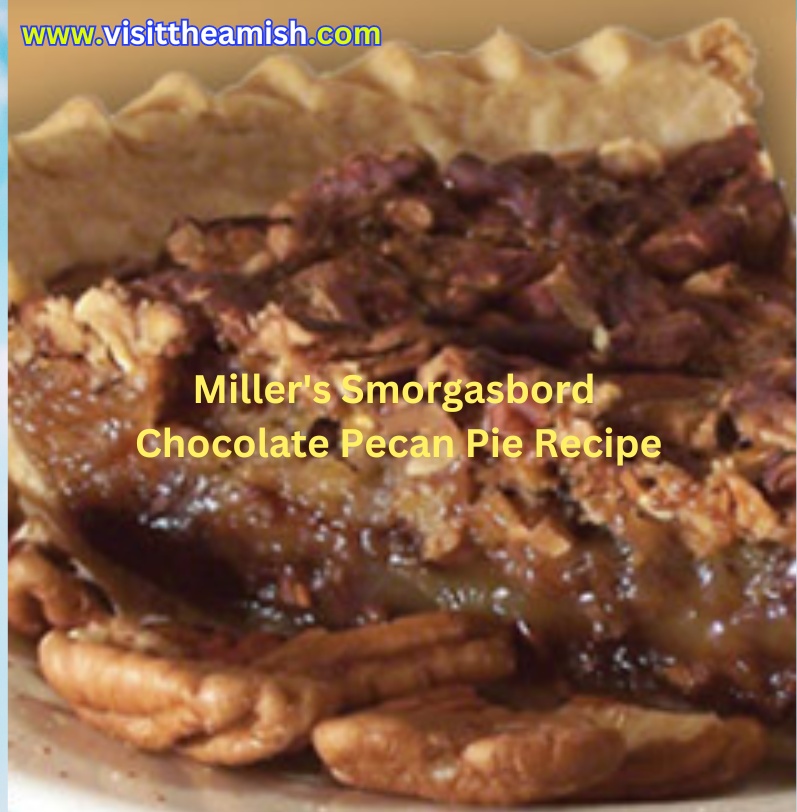As you venture into the charming town of Homer, Michigan, you’ll discover a small but vibrant Amish community that has made this area their home. While Homer isn’t as well-known for its Amish population as some other parts of Michigan, the community here offers a unique glimpse into the Amish way of life.
One of the focal points of the Amish presence in Homer is the Amish meet-up location at 2475 25 1/2 Mile Road[1]. This establishment serves as a gathering place for the Amish community and provides an opportunity for visitors to interact with and learn more about Amish culture. While specific details about this meet-up are limited, it’s likely a place where Amish families come together for social events, markets, or community activities.
As you explore Homer and its surroundings, you’ll find that the Amish influence extends beyond this central meeting point. One of the highlights of any visit to an Amish area is sampling the delicious baked goods, and Homer doesn’t disappoint. Just a short drive from the town center, you’ll find Countryside Bakery at 2204 29 Mile Road[2][3]. This Amish-run bakery is a local favorite, known for its fresh, homemade treats.
Countryside Bakery is open from 9 a.m. to 5 p.m. and offers a variety of baked goods that showcase the Amish commitment to quality and tradition[3]. Visitors rave about their English muffin bread, a unique offering that’s worth trying. If you’re visiting on a Saturday, you’re in for a special treat as they make homemade doughnuts on this day. Keep in mind that like many Amish businesses, Countryside Bakery only accepts cash, so come prepared.
While exploring the area around Homer, you’ll likely encounter Amish farms and homesteads. The Amish are known for their agricultural expertise, and many families in the area maintain traditional farms. You might see horse-drawn buggies on the roads, a common sight in Amish communities.
It’s important to remember that while the Amish in Homer are accustomed to some interaction with outsiders, they generally prefer a quiet, simple lifestyle. If you encounter Amish individuals or families, be respectful of their privacy and customs. Many Amish people prefer not to be photographed due to religious beliefs.
For those interested in Amish craftsmanship, keep an eye out for home-based businesses in the area. While specific information about Amish furniture makers or quilt shops in Homer is limited, these types of businesses are common in Amish communities. You might find handcrafted furniture, quilts, or other artisanal goods for sale.
As you explore Homer and its Amish community, you’ll gain a deeper appreciation for their commitment to simplicity, hard work, and community. The presence of the Amish adds a unique dimension to Homer’s charm, offering visitors a chance to step back in time and experience a different way of life.
Remember that Amish businesses typically close on Sundays, so plan your visit accordingly. And while you’re in the area, take time to enjoy the beautiful Michigan countryside that surrounds Homer. The rolling hills and farmland provide a picturesque backdrop to your Amish country experience.
Countryside Bakery
Your first stop in Homer should be the Countryside Bakery, located at 2204 29 Mile Rd. As you approach the quaint, rustic building, the aroma of freshly baked bread and pastries fills the air, drawing you in. The bakery is run by the Miller family, who have been baking for generations, using recipes passed down through the years.
Inside, you’re greeted by the sight of shelves lined with homemade pies, cookies, bread, and other baked goods. The Millers are known for their cinnamon rolls, which are a local favorite. As you savor a warm, gooey cinnamon roll, you can’t help but appreciate the skill and love that goes into each baked item.
What makes Countryside Bakery truly special is its commitment to using locally sourced ingredients. The flour, eggs, and milk all come from nearby Amish farms, ensuring that everything is as fresh and natural as possible. As you enjoy your treats, you can also browse a selection of homemade jams, jellies, and preserves, perfect for taking a piece of Homer’s Amish community home with you.
Amish Furniture Makers
Next, you’ll want to visit one of Homer’s renowned Amish furniture makers. The Amish are known for their exceptional woodworking skills, and the furniture shops in Homer are no exception. One such shop is located on 28 Mile Rd, where you’ll find beautifully crafted pieces that combine functionality with timeless design.
As you enter the workshop, the scent of freshly cut wood greets you, and you can hear the rhythmic sound of saws and hammers. The furniture here is made using traditional methods, with each piece meticulously crafted by hand. You’ll find everything from sturdy dining tables and chairs to elegant dressers and bed frames.
The artisans are more than happy to show you around and explain their techniques. They use a variety of woods, including oak, cherry, and maple, each chosen for its durability and beauty. The finishes are all natural, highlighting the wood’s grain and adding a warm, inviting glow to each piece.
Purchasing a piece of Amish furniture is not just buying a product; it’s investing in a piece of art that will last for generations. The craftsmanship and attention to detail ensure that each item is unique and built to withstand the test of time.
The Amish Market
No visit to Homer would be complete without a trip to the Amish Market. Located on 29 Mile Rd, this market is a bustling hub of activity, offering a wide range of products made by the local Amish community. As you wander through the stalls, you’ll find everything from fresh produce and handmade crafts to bulk foods and household items.
One of the highlights of the market is the selection of homemade cheeses and meats. The Amish are known for their dairy farming, and the cheeses here are rich and flavorful, made using traditional methods. You can also find a variety of smoked meats, sausages, and jerky, perfect for a picnic or a hearty meal.
In addition to food, the market offers a wide range of handmade crafts and goods. You’ll find beautifully woven baskets, hand-sewn quilts, and intricate wood carvings. Each item is a testament to the skill and creativity of the Amish artisans, making it a perfect souvenir or gift.
The market is also a great place to learn more about the Amish way of life. The vendors are friendly and welcoming, happy to share stories and answer questions about their traditions and practices. It’s a wonderful opportunity to gain a deeper understanding of this unique community.
Amish Buggy Rides
For a truly immersive experience, you can’t miss the opportunity to take an Amish buggy ride. Several families in Homer offer buggy rides, providing a unique way to explore the beautiful countryside. As you climb into the buggy, you’ll be transported back in time, experiencing the landscape as the Amish do.
The ride takes you through scenic farmland, with rolling hills, lush fields, and picturesque barns. Your driver, often a member of the Amish community, will share insights into their way of life, explaining how they farm, live, and worship. It’s a peaceful and reflective experience, allowing you to slow down and appreciate the simple beauty of the world around you.
Buggy rides are available year-round, with each season offering its own unique charm. In the spring and summer, you’ll see fields of vibrant flowers and crops. In the fall, the landscape is ablaze with the colors of changing leaves. And in the winter, the snow-covered fields create a serene and magical atmosphere.
Sky View Imagery: Amish Drone Photography
One of the most surprising and innovative businesses in Homer is Sky View Imagery, an Amish-run drone photography service. This business is a testament to the Amish community’s ability to adapt and embrace new technologies while staying true to their values.
Sky View Imagery is run by Samuel Miller, a young Amish man with a passion for technology and a deep respect for his community’s traditions. Samuel and his team use drones to capture stunning aerial photographs and videos, primarily for agricultural purposes. The drones help farmers survey their land, monitor crop health, and plan for the future.
What makes this business truly unique is how it navigates the complex relationship between Amish values and modern technology. Samuel and his team don’t own smartphones or computers. Instead, they’ve developed a system where English (non-Amish) partners handle the digital aspects of the business, such as image processing and client communication.
In addition to agricultural services, Sky View Imagery also provides aerial photography for real estate listings, event coverage, and even search and rescue operations. It’s a fascinating blend of tradition and innovation, showcasing the Amish community’s ability to adapt to the modern world while maintaining their core values.
Conclusion
As you conclude your visit to Homer, Michigan, you’ll leave with a deep appreciation for the Amish community and their way of life. The businesses and attractions you’ve explored offer a unique glimpse into a world where craftsmanship, sustainability, and community are paramount.
From the delicious baked goods at Countryside Bakery to the meticulously crafted furniture, the bustling Amish Market, the serene buggy rides, and the innovative drone photography service, each experience has provided a rich and immersive look into the Amish way of life.
Your journey through Homer has been more than just a tour of unique businesses. It’s been a lesson in adaptability, creativity, and the enduring strength of a community that continues to thrive in an ever-changing world. As you head home, you carry with you not just the handcrafted souvenirs and delicious treats, but also a newfound appreciation for the complex and fascinating world of Homer’s Amish community.
Citations:
[1] https://www.michigan.org/article/road-trip/hillsdale-homer-sturgis
[2] https://www.yelp.com/search?find_desc=Amish+Bakery&find_loc=Homer%2C+MI
[3] https://www.amish365.com/amish/michigan-countryside-bakery/
[4] https://amishamerica.com/michigan-amish-tourism-business/
[5] https://www.amish365.com/where-are-the-amish-in-michigan/










































































































